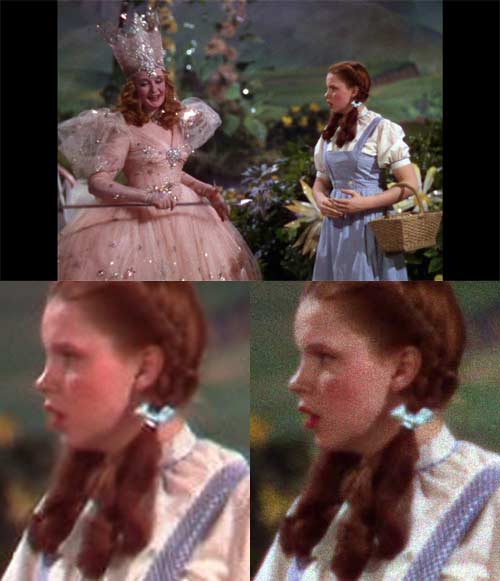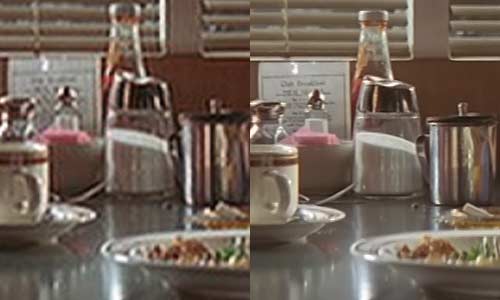Home Entertainment Blog Archive
Brought to you by your friendly, opinionated, Home Entertainment and Technology writer, Stephen DawsonHere I report, discuss, whinge or argue on matters related to high fidelity, home entertainment equipment and the discs and signals that feed them. Since this Blog is hand-coded (I like TextPad), there are no comments facilities. But feel free to email me at scdawson [at] hifi-writer.com. I will try to respond, either personally or by posting here emails I consider of interest. I shall assume that emails sent to me here can be freely posted by me unless you state otherwise.
This archive is for an uncertain period commencing Thursday, 10 December 2009
Well, I’ve decided at last to move to proper Blog software – WordPress. Over time I shall migrate in all the old stuff from this Blog over there. So here it is!
Well, it turns out that high-end brand Lexicon has released a Blu-ray player which is really the Oppo BDP-83 with Lexicon cosmetics. Audioholics makes a pretty convincing case here.
Nothing wrong with that, necessarily, except that Lexicon insists that it has tweaked the unit and according to Audioholics tests, it's pretty hard to see how it could have. Oh, and apparently the Lexicon BD-30 costs some $US3,000 more than the $499 Oppo!
Well, you do find these things. The NAD T587 Blu-ray player was essentially a prettier looking LG BD300 Blu-ray player. Some companies never developed their own DVD players from the ground up, and even today use the internals from some other brand.
Well, at least Lexicon chose what seems to be the best Blu-ray platform presently on the market.
I was just clearing some old stuff off my computer and discovered a video clip that demonstrates that competent upscaling can be elusive even for professionals. The clip is six minutes long, which I recorded from the Prime TV HD service here in Canberra back on 19 November 2009. It was from its morning show -- the clip aired around 10:33am -- which sells lots of stuff. Having a look at it, I can see what originally caught my eye.
Look closely at the text in this frame, which is part of the show not long before a break for advertising:

The frame is 1,920 by 1,080 pixels (actually, broadcast at 1,440 by 1,080, but my application rescales it). I have scaled this down, of course, but see the round inset, which is a part of the original frame at the original display resolution. Do you see the fine horizontal lines in the detail of the text? This is very common artefact of poor deinterlacing prior to upscaling. I've been talking about this for going on three years (see the top rendition of 'SPORT' in the graphic).
To make it clearer, here's the inset at 300% of original size:

But this is unnecessary. In fact, the same clip contains a regular advertisement with nicely clean text:

So the problem is related to the show itself, and how its content is scaled. When the show resumed, the problems resumed:

I still haven't quite got my head around what interaction between deinterlacing and scaling (from 576i to 1080i) could result in these artefacts. Any suggestions?
In December it was widely reported that the European Union is to require that MP3 players have a default maximum level of 85dB. Whatever the hell that means. 85dB average? Peak? A-weighted? C-weighted?
Apparently some kind of over-ride will be permitted. Yippee.
Meanwhile, some pains-in-the-arse lost their court case in California. They were suing Apple over the iPod, claiming its product was unsafe because of the possibility of hearing damage due to high output levels. The court held that the iPod was simply doing the job for which it was designed: reproducing music. A lawyer for those aforementioned pitas said that 'Hopefully someone in the government in the United States will follow suit', referring to the EU decision.
These people are seemingly clueless.
The output level of a sound reproduction system is determined by two things: the level able to be output by the electronics and the efficiency of the transducer. If you limit the former, you can still get the same number of decibels by having a higher efficiency transducer. Recently, for example, Yamaha gave me a set of its EPH-30 in-ear headphones. If you're dissatisfied with the sound your iPod earphones are delivering, I suggest you try these ones out. They use silicon plugs (three sizes supplied) to provide a good seal, and offer balanced sound, without the upper midrange harshness that in-ear headphones normally produce, as well as extended bass.
Plus they are highly efficient. Yamaha's figures aren't easy to intepret, but with a regular iPod they will easily do damage to your ears within seconds, should you wind up the volume to max. That means that they should work fine in almost all portable MP3 players, since these typically produce lower maximum output levels than the iPod.
But that's the point. If Apple is forced to set a particular output level, then there will be a premium on highly efficient earphones -- probably at the expense of quality.
Back briefly to the EPH-30 units, the only real complaint I have concerns the cables. The soft rubbery material in which they are finished is like a magnet for dirt, and also tends to grab clothing, rather than slide smoothly, so there is some physical noise generation and transmission. In addition, the cable wants to retain the shape it assumed inside the package, rather than falling naturally.
Still, consider these before the penny drops and the regulators decide that in order to protect you from yourself they should also limit the sensitivity of earphones.
Go all the way back to 1939. Can a movie so old look better on Blu-ray than on DVD? Sure can: see my Wizard of Oz Blu-ray vs DVD comparison.
Here's a sample:

Also, I've added my Australian HI-FI reviews of Sleeping Beauty, Woodstock: 3 Days of Peace and Music, An American in Paris, and the original 1980 version of Fame.
Last night I uploaded my Blu-ray vs DVD comparison for Pulp Fiction. See it here. It presented a few difficulties, discussed in the comparison, but primarily because the Australian DVD is such a shockly bad transfer. Here, for example, is a frame grab from the DVD, with the bottom section being a detail of the whole frame, unscaled:

In the end I decided to use the UK version of the DVD for the comparison. Here's one of the shots (DVD left, Blu-ray right):
